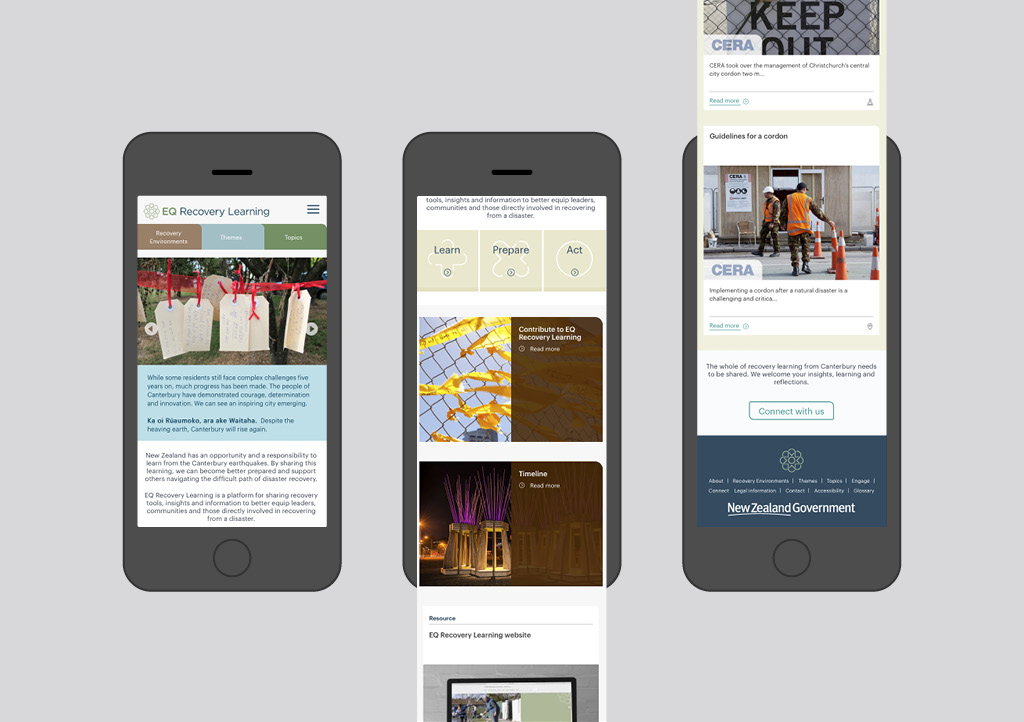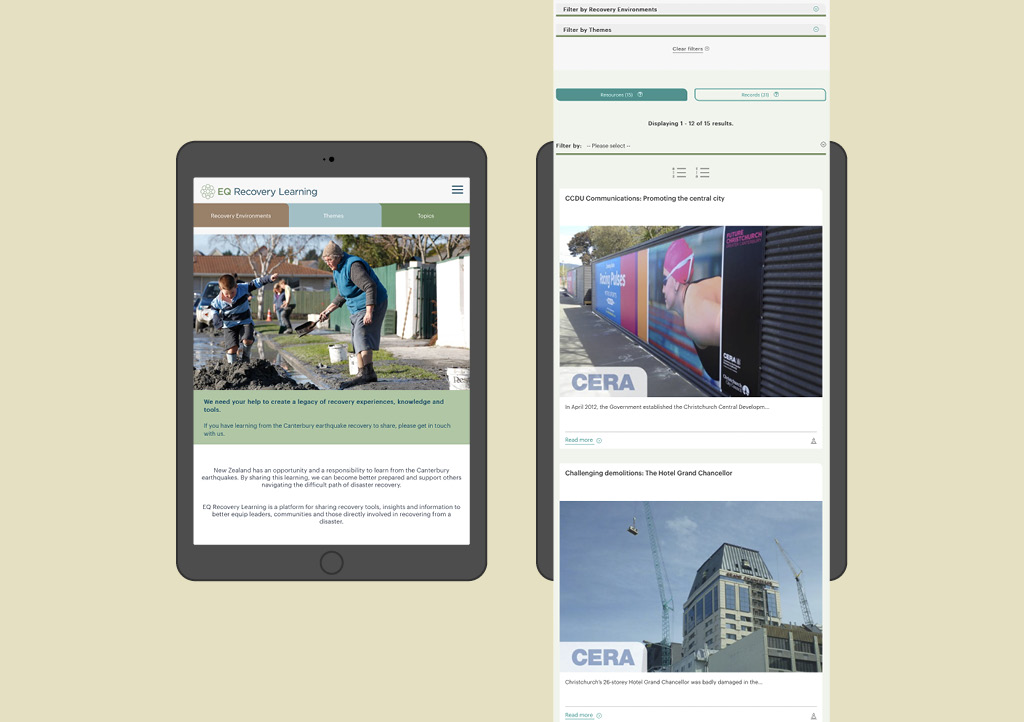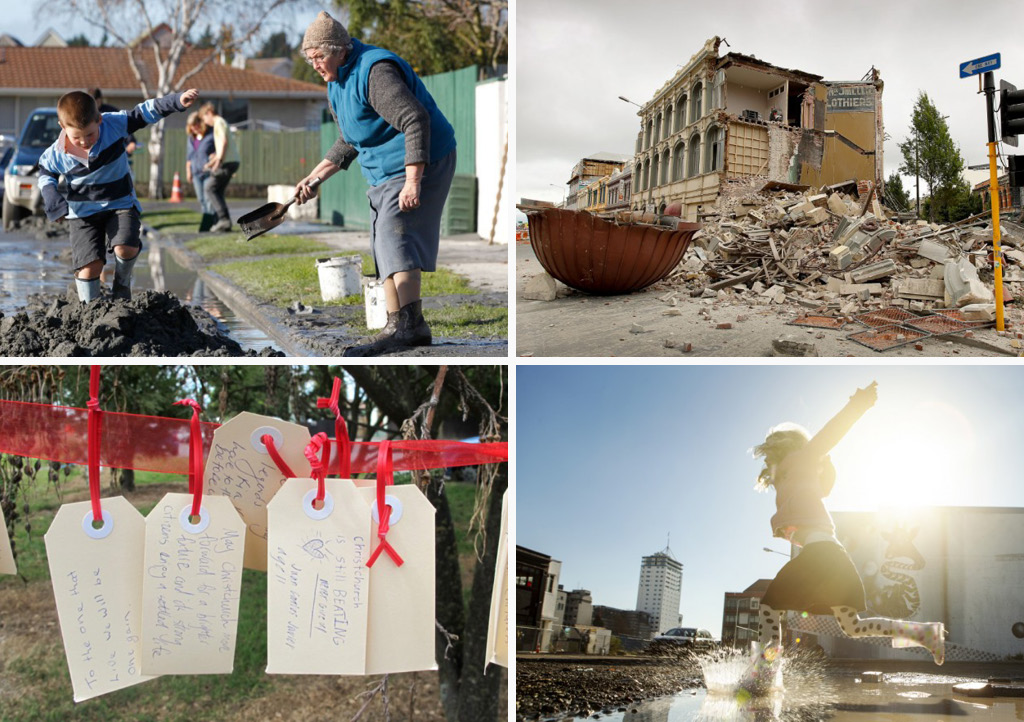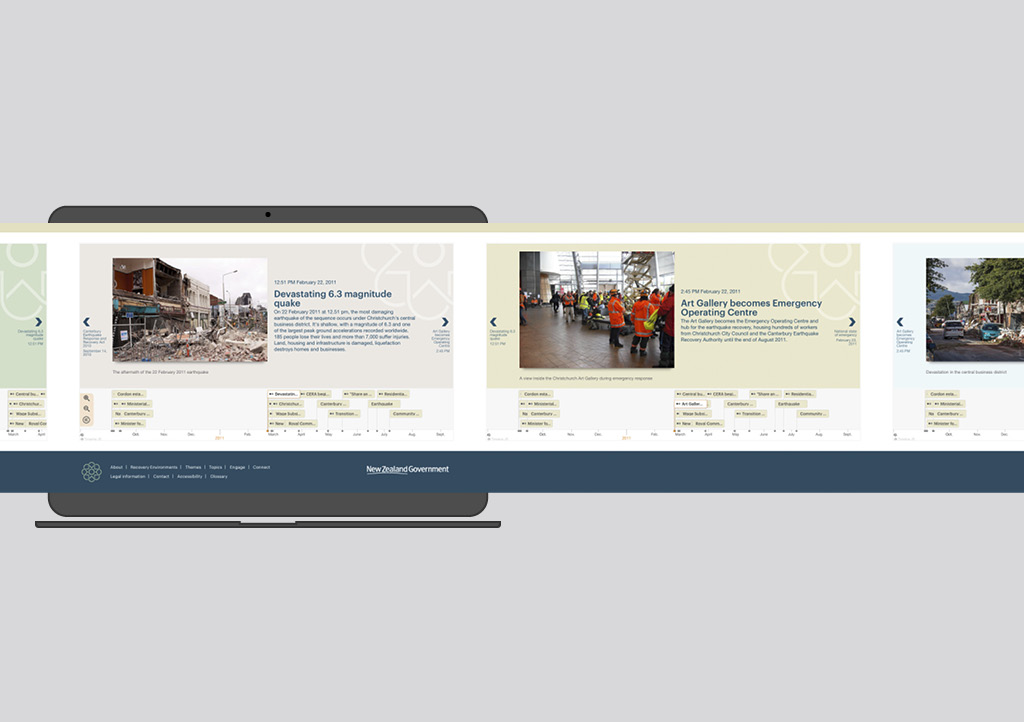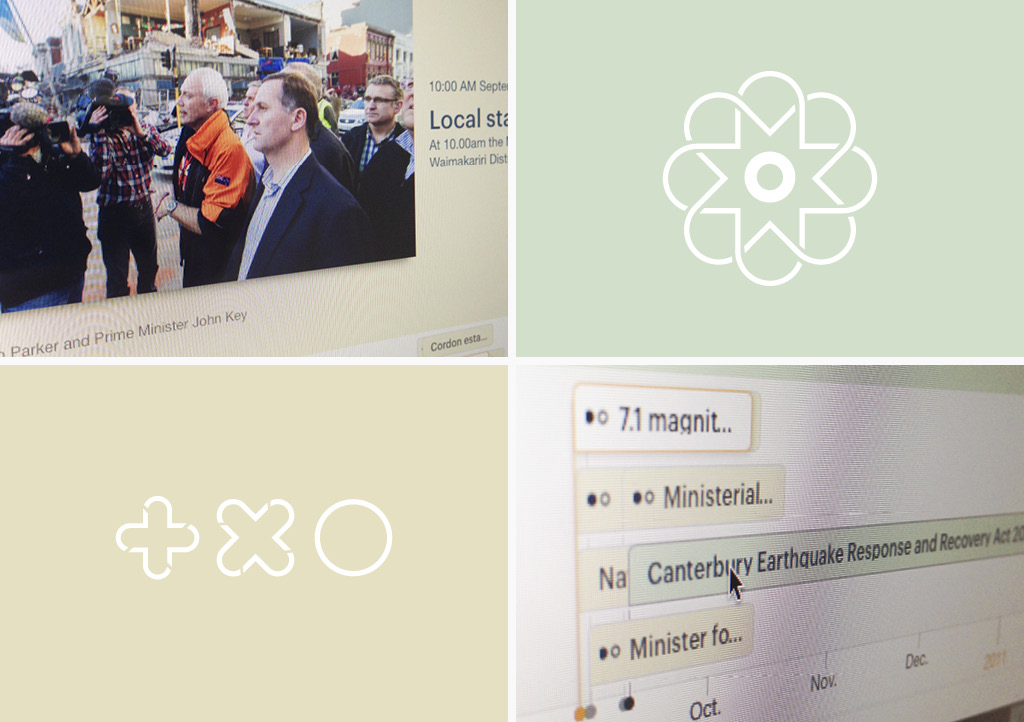Capturing earthquake learnings for the future
Client: Department of the Prime Minister and Cabinet
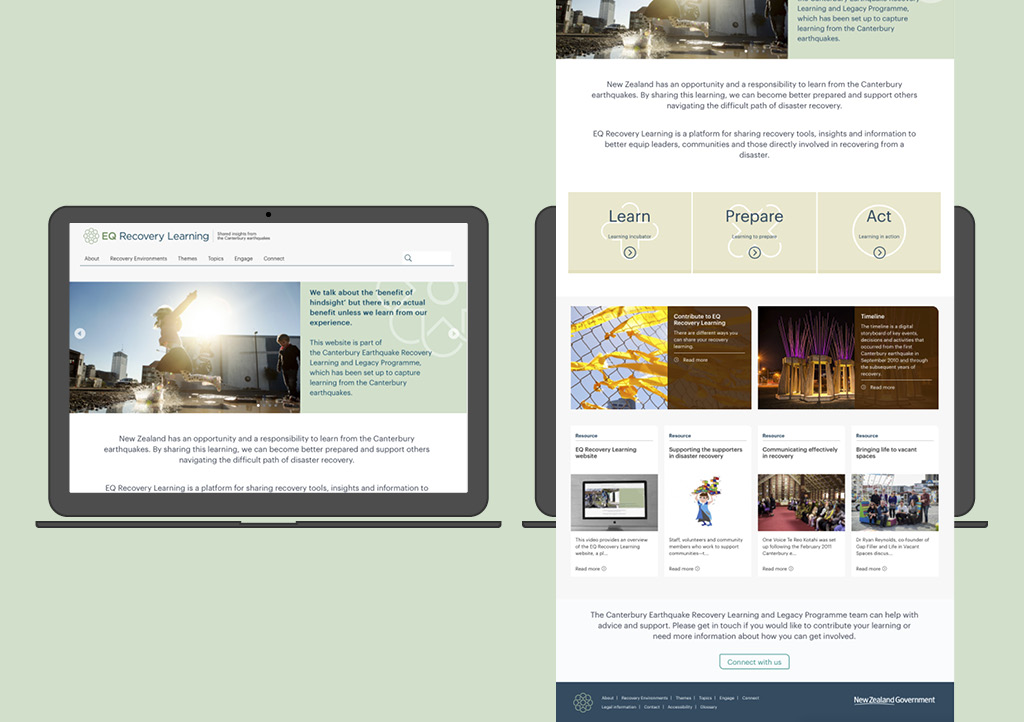
A lot was learnt from New Zealand’s response to the Christchurch earthquakes – both positive and negative.
The Prime Minister and his Cabinet wished to share all these learnings, for the benefit of history and to serve as a practical knowledge resource – useful to global recovery practitioners facing similar disaster situations and equally effective for local students.
The Brief
How do you capture five years of documents, decisions, activities and learnings from the response efforts – what worked and what didn’t - in a way that is easily accessible to all? That was the challenge we undertook when we signed up to develop the Earthquake Recovery learning site for CERA and the Prime Minister’s office.
Knowing that the website would contain literally thousands of documents, the project was primarily about understanding audience groups and the art/science of information architecture to ensure each group could easily find what they were looking for.
The Solution
The first challenge was to get our heads around the audiences, through the development of ten personas and extending these to very detailed user stories. At the same time, we worked closely with the client’s subject matter experts to understand the thousands of discrete pieces of content and the relationships between them.
We applied a progressive ‘sprint’ approach to the development of user journeys, IA and UX, meeting with the client every two weeks and collaboratively workshopping requirements and solutions before finalising very detailed wireframes and developing a prototype.
The site’s engine is a giant database of tagged content, accessed via multiple user-driven lenses such as themes, topics, environments and outcomes. Given the importance of content, the client started collecting and developing content early - aligning with the content matrix, strategy and style guide we provided, and utilising a specific content entry tool we built to help them develop, catagorise, tag, review and approve content.
The design phase focused on the client's vision of an oasis of calm. The primary audience – recovery practitioners – would access the site either during or shortly after a disaster situation and we wanted the site to feel calm, reassuring, organised and a source of support for them.
This is reflected in a soothing colour palette and the navigation choices we made.
The complexity of the site meant a big build, both from a front-end perspective, but also accommodating all the tagging and catogorising in the back-end. The site was built in SilverStripe, incorporating the Government’s CWP requirements and was therefore subject to well-defined accessibility, security and testing standards.
The Results
The site has been a huge success, both in terms of hits and in engaging a community around it.
